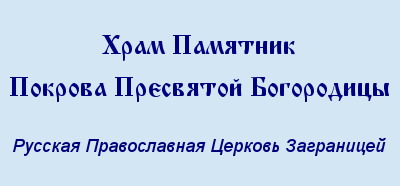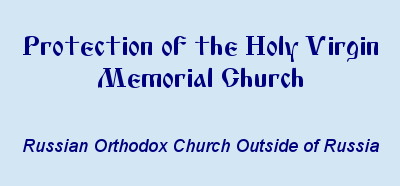Dear Brothers and Sisters,
Congratulations with the feast of the Resurrection of the Lord, with the conclusion of the first week of Great Lent, with the feast of the Finding of the Head of St. John the Baptist, as well as with the Triumph of Orthodoxy, that is, with the memory of the final victory of the Orthodox over the heretical iconoclasts!
Recently we discussed all the Ecumenical Councils, including the seventh which examined the question of icon veneration. At that time we briefly talked about the history of this council as well as the theological reasons why it is necessary to use icons in Christian worship as well as in our daily lives. Since we have already raised these topics, today let’s focus our attention on some of the more practical aspects of the veneration of icons.
We have become so accustomed to icons that sometimes we forget that they are holy by the fact that they depict the Saviour Himself, His Most-pure Mother, and His saints, and that they therefore demand from us a certain pious disposition towards them. It is for this reason that we kiss icons, sometimes decorate them with silver or gold covers, light before them lampadas and candles, burn incense before them. This type of pious attention must be paid to all icons, not just to those found in church or to ones that are especially revered. Of course, this is difficult to do when we have hundreds of small, cheap, paper icons in our homes, when calendars and book covers are printed with icons, when it is possible to buy a kerchief with an image of St. Matrona or St. Ksenia, when practically any items such as pillows, mugs, phone cases, bookmarks, greeting cards and nightlights can be had with an icon or the image of the cross emblazoned on them. What’s to be done with a mug with an image of Christ when it breaks? It’s impossible to burn it, while throwing it out is not nice or perhaps even somewhat sacrilegious. Often such items are brought to church and the problem is passed on to someone else.
To avoid such problems, which we must note come up very often, we should remember the sanctity of icons. If the Lord accepts our veneration of images as veneration of Himself, His mother, and His saints, then most likely our lack of veneration and our carelessness in regards to icons can be considered as disrespect to the prototype. Therefore, let’s treat icons with care. It’s better to have one or several handpainted icons or good quality reproductions than numerous postcards which quickly fade and crease. Icons should stand on a clean and tidy shelf or hang on the wall in a designated place for icons. Books on which icons are pictured should also stand neatly on a shelf and not lay carelessly on a table or on the floor with magazines. We should avoid having clothing or things which we use in our daily lives with images of the Lord, the cross, or the saints depicted on them. This is firstly disrespectful and secondly creates problems when the item breaks or it is time to replace it.
Today, when we celebrate the triumph of the iconodules, let’s remember all those brave defenders of icons, from the erudite monks that taught and preached with such clarity and beauty in defense of images to the simple women who physically hampered those who wished to destroy the icons. Let us also worthily, piously, without any excesses venerate the holy images.
priest Alexis
P. S.
This year the Russian Orthodox Church celebrates a significant anniversary – one hundred years since the death of the confessor Patriarch Tikhon of Moscow and All Russia. Saint Tikhon was elected First Hierarch of the Russian Church in Moscow at the All-Russian Local Council in November 1918, at the height of the October Revolution. He served as patriarch during the most difficult of times in Russian history: the revolution, the civil war, the first years of the persecution of the Church. He died on the evening of April 7, the day of the Annunciation of the Most Holy Theotokos, and was buried a week later on Palm Sunday.
It is not appropriate to celebrate his memory, like any other saint’s memory, on these great feastdays associated with the redemption of the human race. The liturgical rubrics also make it impossible to mark his commemoration on Sunday, April 6. For these reasons, we in our parish will celebrate this important anniversary on March 30th. On Saturday evening, March 29th, we will serve an all-night vigil to Saint Tikhon, and on Sunday morning after the Liturgy, a moleben. After lunch, for those who wish, we will hold a gathering in memory of the late Patriarch, at which two short lectures will be read. The first will focus on Saint Tikhon’s service and activity in North America, while the second will discuss his service as patriarch.







